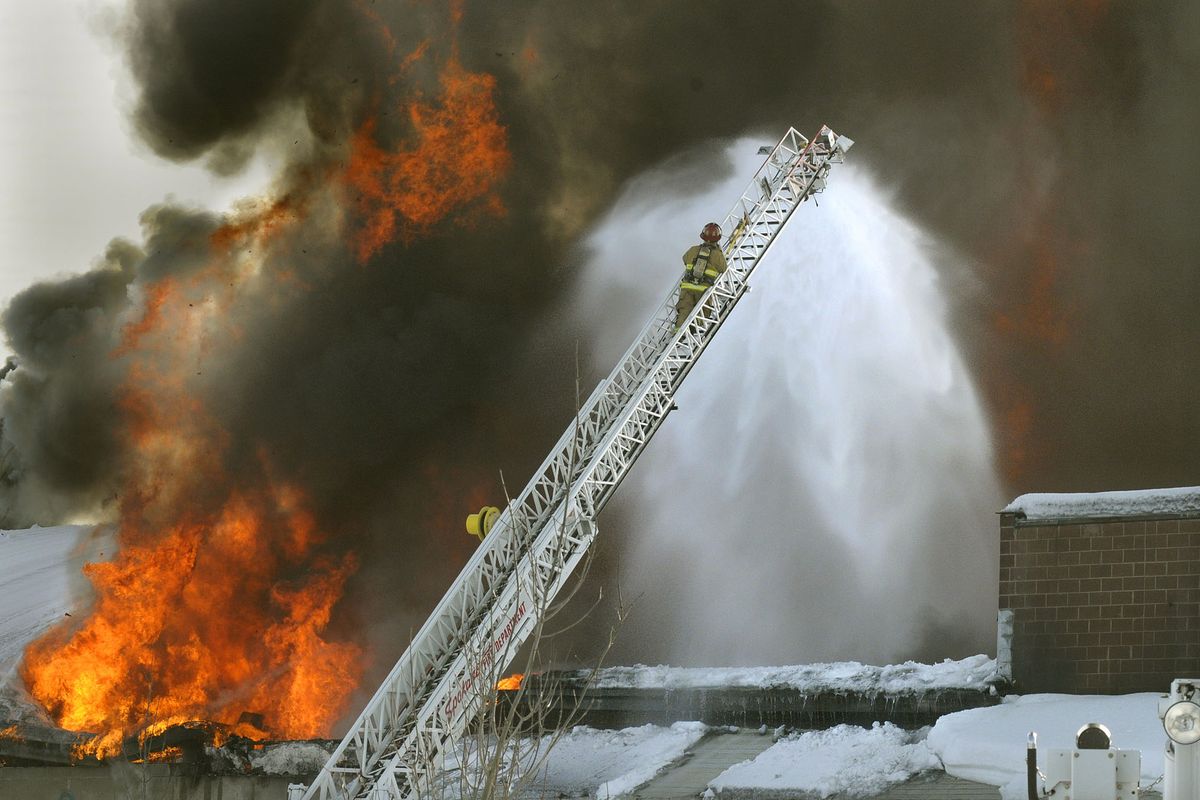Torch may have sparked blaze at warehouse

A cutting torch being used to rebuild a collapsed awning may have sparked the three-alarm fire Tuesday at a cold storage business that took 14 of the city’s 17 fire rigs to bring under control in east Spokane.
It took three hours for firefighters to contain the midmorning blaze at Empire Cold Storage, 3857 E. Olive St.
Two anhydrous ammonia tanks threatened by the blaze posed a public safety hazard had they been breached by the fire, said Spokane Fire Deputy Chief Dave Leavenworth. Officials asked people to stay at least 500 feet away and evacuated nearby businesses.
About 60 firefighters, including the crew of a Spokane Valley ladder truck, responded to the blaze near Freya Street and Broadway Avenue, which sent up a plume of steam and black smoke visible for miles in the clear weather.
Three employees inside the building escaped unharmed, officials said.
A construction crew had been working to repair an awning at the business that had collapsed under the snow’s weight, said Spokane Fire Chief Bobby Williams. Among the tools they were using was a cutting torch.
Streets around the cold storage business – in the heart of the light industrial district in east Spokane – were blocked by police.
Eyewitness Ethan Kuebler was among a group of citizens who helped by clearing snow from fire hydrants. “People started showing up with shovels and a gentleman showed up with a little Bobcat to help dig out the fire hydrants,” he said.
Firefighters initially attacked the fire from inside, but quickly retreated to what’s called a defensive position from the outside, using constant streams of water from three aerial ladders along with water streams from “ground deluge guns.”
The fire caused the roof to collapse, which forced firefighters to attack the flames from above, officials said.
Empire Cold Storage is made up of three connected structures. The one that caught fire was at the middle of the business and appeared to be from the late 1950s or early 1960s.
Leavenworth said that masonry walls on both ends of the burning building prevented the blaze from moving into the adjacent structures.
One tank of ammonia was located at the east end of the complex in a basement and contained 2,000 pounds of the combustible gas. The other tank was on the west end with 2,500 pounds.
“The challenge we have, obviously, is if they catch on fire then we start having issues with toxicity in the air,” Williams said as crews fought the blaze.
Anhydrous ammonia is used as a farm fertilizer and in refrigeration. Contact with a low concentration can cause eye or throat irritation. Contact with high concentrations can cause a potentially fatal build-up of fluid in the lungs.
In a subsequent news release, Williams said, “This is an extremely dangerous chemical that can react violently to fire creating a number of hazardous situations.”
The warehouse held about 100 tons of frozen food, the chief said.
During the peak of the incident, city fire stations were staffed temporarily with units from surrounding fire agencies, including the Spokane Valley Fire Department and county Fire Districts 8, 9 and 10 under mutual aid agreements.